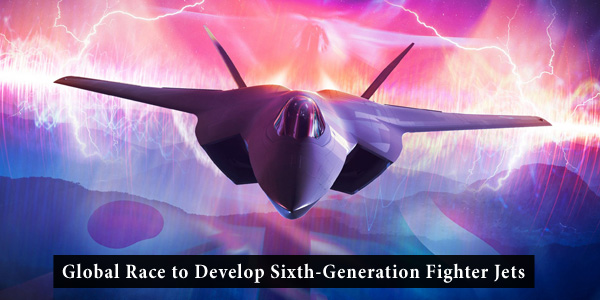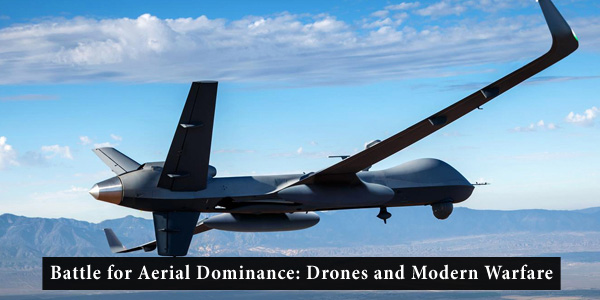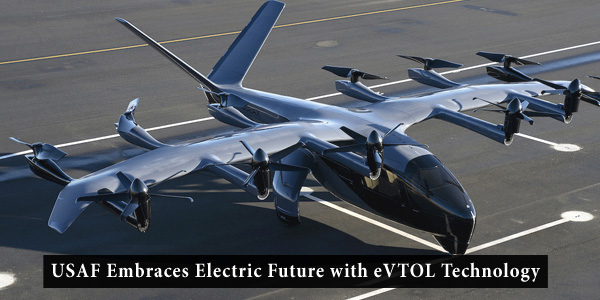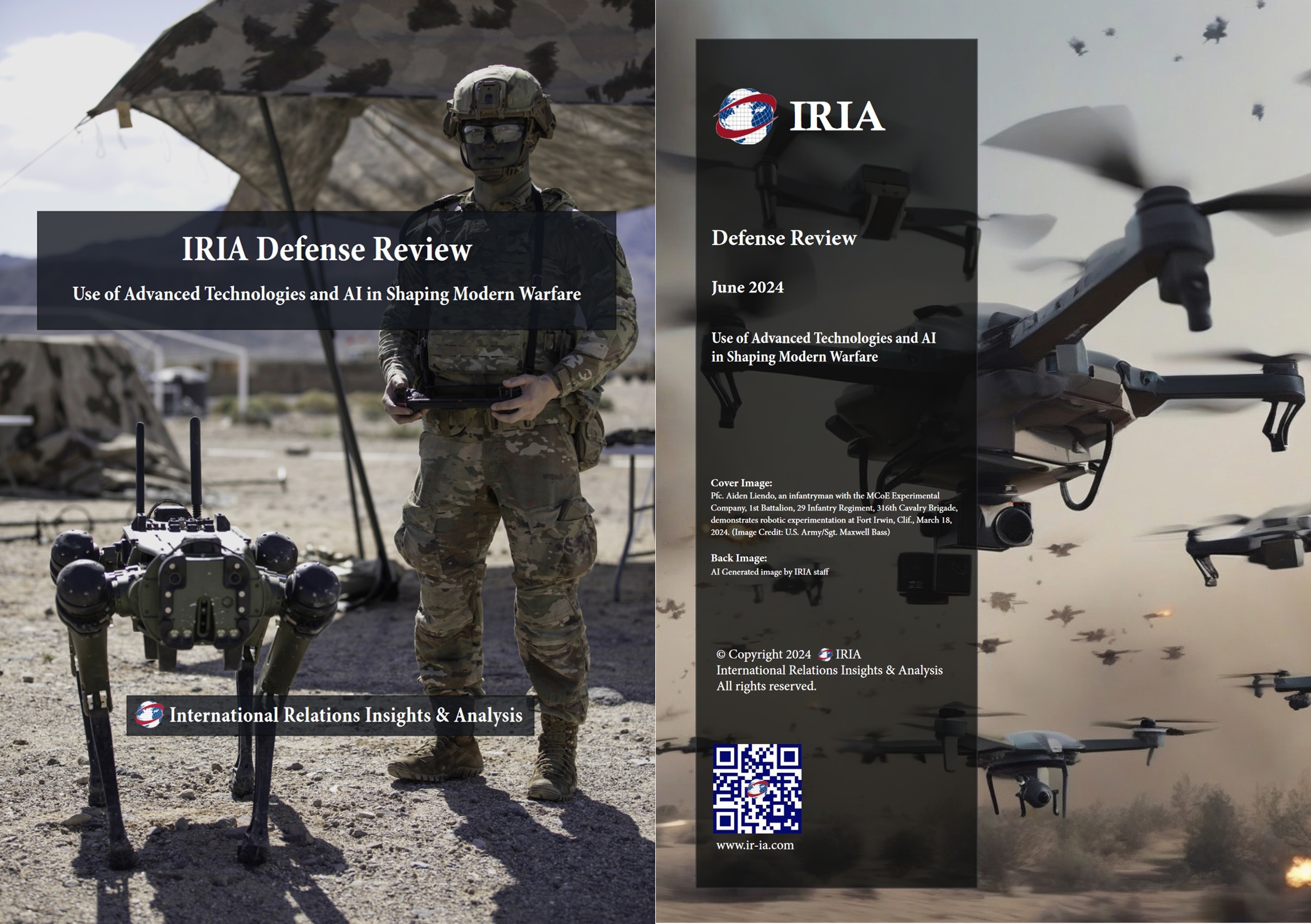Global Race to Develop Sixth-Generation Fighter Jets
IRIA Staff - July 1, 2024

Advanced countries and aerospace firms around the world are actively engaged in research and development endeavors aimed at conceptualizing and ultimately deploying sixth-generation fighter jets.
Despite the absence of operational examples currently, the global aerospace industry has already achieved significant technological milestones during the development of fifth-generation fighter jets. These advancements include stealth technology, advanced avionics, high-performance engines, and modern air-to-air and air-to-surface armaments.
Features of Sixth-Generation Fighter Jets
There are only a handful of projects in the world that have progressed to develop a prototype for sixth-generation fighter jets. All these ongoing projects have a common theme of integrating modern technologies, especially artificial intelligence (AI) into their projects. Some of the common technologies used by almost all sixth-generation fighter jets are as follows:
• Enhanced Stealth Capabilities: Building on the stealth technology of fifth-generation aircraft, sixth-generation fighters may incorporate even more advanced stealth features to minimize radar cross-section and infrared signatures, making them even more difficult to detect.
• Integration of Directed Energy Weapons: Sixth-generation fighters would feature directed energy weapons, such as high-powered lasers, for both offensive and defensive purposes. These weapons could provide precise targeting and engagement capabilities against various threats.
• Adaptive structure: Some of the sixth-generation fighter jets may incorporate adaptive structures that can change shape in flight to optimize aerodynamics and performance based on the current mission requirements and environmental conditions.
• AI and Autonomous Systems: Artificial Intelligence and autonomous systems will play a significant role in sixth-generation fighters, enabling enhanced decision-making, autonomous mission execution, and improved human-machine teaming capabilities.
• Supercruise and Hypersonic Capabilities: Sixth-generation fighters may have the ability to sustain supersonic speeds without the need for afterburners (supercruise) and potentially achieve hypersonic speeds, allowing for rapid response and engagement of distant targets.
• Modularity and Scalability: Sixth-generation fighter designs may emphasize modularity and scalability to accommodate future technology upgrades and mission-specific configurations, ensuring adaptability to changing operational environments.
Sixth-Generation Fighter Jet Projects Under Development
Projects focusing on the development of sixth-generation fighter jets started as early as 2010. Currently, there are a few publicly known sixth-generation fighter jet development projects.
1. United States NGAD and F/A-XX Program
United States has one of the oldest sixth-generation fighter jet programs dating back to 2008. The U.S. Air Force’s Next-Generation Air Dominance (NGAD) and the U.S. Navy’s F/A-XX programs are among the key sixth-generation fighter jet projects. These jets aim to integrate stealth, supermaneuverability, advanced weaponry, and digital technology. NGAD, a highly classified initiative, represents a paradigm shift for the USAF, adopting a network-centric system-of-systems approach rather than relying on a single platform. Anchored by a sixth-generation fighter aircraft, NGAD will encompass manned aircraft, unmanned loyal wingman drones, and advanced command and control systems. The NGAD program requires an estimated $16 billion over five years through 2028 for research, development, testing, and evaluation.
Expected to replace the F-22 Raptor stealth fighters, the NGAD modern sixth-generation fighter is slated for deployment starting in 2030, with plans for 200 NGAD fighters and 1,000 collaborative combat aircraft. Meanwhile, the Navy’s F/A-XX is aimed at developing and acquiring a future sixth-generation air superiority fighter to replace the United States Navy’s F/A-18E/F Super Hornet and work alongside the F-35C, with deployment scheduled to begin in the 2030s. The F/A-XX is likely to play a pivotal role in both manned and unmanned operations. Shrouded in secrecy, not very much is known about the F/A-XX yet. Three top American aerospace defense contractors – Boeing, Lockheed Martin, and Northrop Grumman – are competing to build the aircraft, while Pratt & Whitney and GE Aerospace are vying for the engine contract.
2. Mitsubishi F-X Jet
The Mitsubishi F-X (also known unofficially as F-3) is a sixth-generation stealth fighter being developed for the Japan Air Self-Defense Force (JASDF). Serving as Japan’s inaugural domestically developed stealth fighter jet, it is slated to replace the Mitsubishi F-2 by the mid–2030s. Its development aims to strengthen the nation’s defense industry and possibly venture into the global arms market considering Japan’s evolving defense stance. The F-X, a twin-engine stealth fighter, is engineered to achieve air superiority. According to the Japanese Ministry of Defense’s classification, the technology, and capabilities inherent in the F-X align it with the criteria for a sixth-generation fighter jet.
The F-X jet would be larger than the U.S.-made F-22. The larger dimensions reflect the Ministry of Defense’s intent for the aircraft to boast extensive range and payload capacity. Technologies trialed in the X-2 technology demonstrator are anticipated to be integrated into the F-X fighter. Japan’s Defense Ministry has affirmed that the F-X will feature robust network capabilities and will accommodate a greater number of missiles compared to the F-35. In December 2022, Japan, Britain, and Italy revealed their decision to collaborate and jointly develop a sixth-generation fighter aircraft by 2035 under the Global Combat Air Programme (GCAP) partnership.
3. BAE Tempest
The BAE Systems Tempest is an envisioned sixth-generation fighter aircraft currently in development in the United Kingdom for the Royal Air Force (RAF). Scheduled to enter service by 2035, it will gradually replace the Eurofighter Typhoon in the European market. The aircraft is part of the Future Combat Air System (FCAS) program, spearheaded by a consortium known as Team Tempest, comprising the Ministry of Defense, BAE Systems, Rolls-Royce, Leonardo, and MBDA UK. The British government plans to allocate more than $3 billion for the initial phase of the project until 2025. According to BAE Systems, Tempest is designed to be a modular fighter jet, enabling easy adaptation to specific missions, and facilitating component upgrades throughout its operational lifespan. Featuring a delta wings design and double tail design, Tempest would incorporate stealth technology. The jet would also have the capability for unmanned flight, as well as utilize swarming technology to manage drones.
4. Mikoyan PAK DP (MiG-41)
Commonly referred to as the MiG-41, Russia’s Mikoyan PAK DP is the country’s flagship sixth-generation supersonic fighter jet still in development. So far, no official designation has been given to the project and the name MiG-41 comes from the project that has been named izdeliye 41 (product 41). The design for the PAK DP had been finalized by 2019. And in 2020, the Russian Ministry of Defense initiated the progress on the project. Presently, the project is still in the research and development phase. Not much information has been unveiled by Russian official sources about the progress of the project. In an interview conducted in July 2020, Ilya Tarasenko, the general director of the MiG corporation, along with the head of the Sukhoi company, revealed that the PAK DP will be based on the design of the MiG-31.
To Continue Reading, Download Full Report...
ALSO READ:
Regions
Issues


















 Battle for Aerial Dominance: Drones and Modern Warfare
Battle for Aerial Dominance: Drones and Modern Warfare USAF embraces electric future with eVTOL technology
USAF embraces electric future with eVTOL technology








